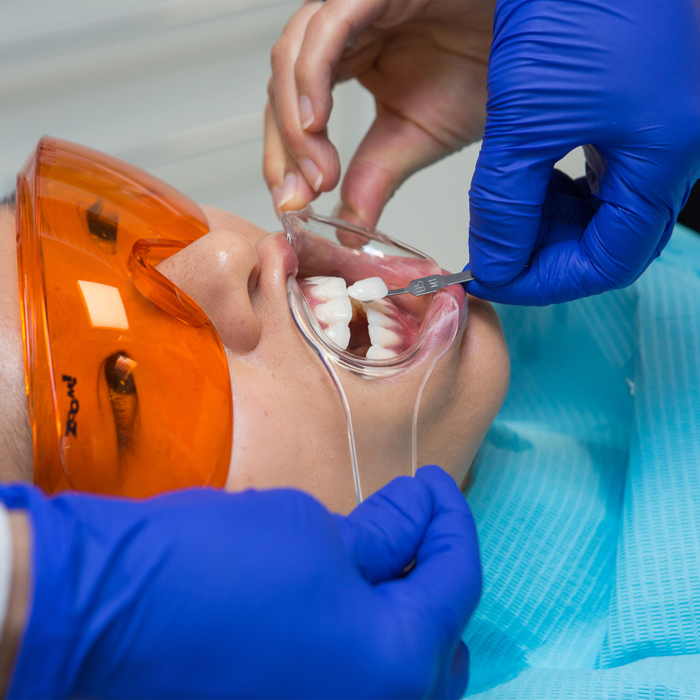
Why Are Some Teeth Darker In Colour Than Others?
The structure of the tooth determines the colour.
- Enamel is glassy and whitish a bit like opaque glass. If you have very thick enamel then your teeth will look whiter
- Dentine is just underneath the enamel it is coloured from very pale yellow to dark greys and browns and it is the main determinant of tooth colour. When the tooth is young the dentine is thin and therefore contributes only a little to the colour, as you age your nerve of your tooth makes more dentine and so the tooth appears darker.
- Nerve of the tooth is the innermost layer and it is of course pink in colour. Bleach has been shown to penetrate to the neve but has no lasting effect on it. If the nerve in a tooth dies, there are many by-products of that nerve death that also can darken the colour of the tooth. Sometimes in a tooth that has been traumatised by a hit the nerve can shrink away to nothing and the tooth will look a yellower colour than the surrounding teeth
- Skin colour also determines the way in which we view the colour of people’s teeth. Very pale skin can accommodate very white teeth without looking odd as the contrast is not too great. When the skin is darker then the contrast is greater and the teeth look whiter much like a picture frame can change the colour of a painting.
When looking at a natural smile you will see that some teeth are yellower than others. This is particularly true of the canine or eye tooth which is a very big and bulky tooth with lots of dentine. Bleaching retains this graduation of colour which makes the bleaching effect very natural.
Bleaching is one of the most effective and conservative ways that we can improve our smile.
Happy bleaching!
If you are interested is visiting Dr. Downing’s office for a Free Smile Assessment, click the link below and start your journey to a new, brighter smile!

